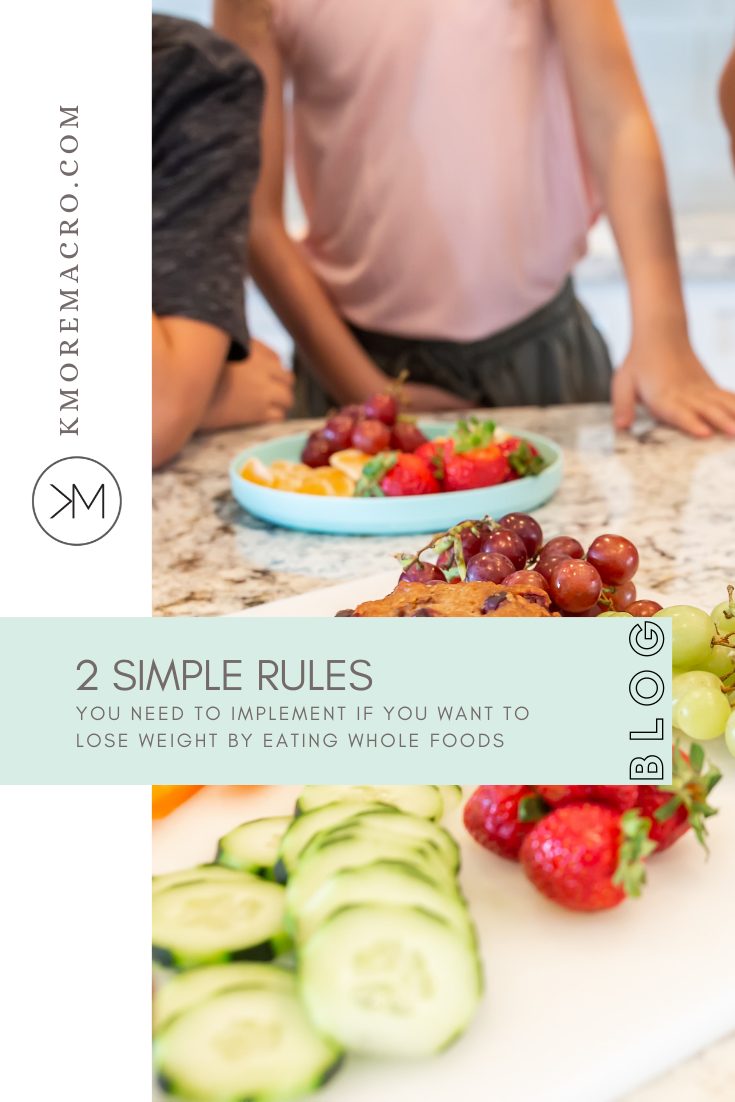2 Simple rules you need to implement if you want to lose weight by eating whole foods
If you are trying to live a healthier life by eating more whole foods and fewer processed foods, then you are on the right track towards a healthier life. However, if you’re making the switch and still gaining weight, there is a very simple answer to what’s going on. You’re overeating!
Yes, whole foods are good for your health, but like all good things, having too much of a good thing can be a bad thing. Whole foods are usually more calorically dense than processed foods, which means that there are more calories in smaller servings.
The good news about whole foods is that you are getting more nutrients in each serving so you don’t need to eat as much of it. However, if you’re not used to eating smaller servings you will overeat because you think you need more food.
I want to stress that eating whole foods is better for you, even if your gaining weight! Whole foods will give your body the energy and nutrients it needs to perform at its best. You should absolutely choose whole foods, but you need to still be aware of what you’re eating.
I have two simple rules to make sure you’re eating the right foods for you body. The first rule is to track how many calories you’re eating, even when you’re eating whole foods. The second rule is to know how many macros you need so that you can eat intentionally to reach your goals.
Rule 1: Whole foods have calories, you need to track them
Just because you’re eating good foods doesn’t mean you can eat as much as you want. Weight gain is fairly straightforward, if your body isn’t using all of the food you eat to fuel itself then it will store the rest for later, causing weight gain. It doesn’t matter if the food you eat is whole or processed. Too much food will cause weight gain.
Did you know that a serving of an avocado is ¼ of the avocado? How much did you put on your toast this morning? How much guacamole did you eat at dinner? Avocados are crazy good, I know, but if you eat a full avocado you’re eating around 320 calories (80 calories/serving.) That small avocado adds up quickly, so you need to be aware of how much you’re eating!
The easiest way to make sure you’re getting the right amount of food is to track it! I love using My FtinessPal to track all of my food. It makes it simple to see how many calories, and macros (we’ll go more in depth on this in a minute) are in a serving. Once you understand what a serving is, it’s easier to see if you’re overeating.
I also recommend getting a food scale or other measuring tools so that you can learn how much food is in a serving. Whole foods don’t usually come with serving sizes on them because they aren’t packaged, so a food scale can help you see what an ounce looks like.
Rule 2: Know how many macros you need on a daily basis
When you start tracking your food, you may be tempted to focus on how many calories you’re eating, but you also need to think about your macros! Your body needs certain amounts of carbs, proteins and fats in order to function at its best.
The amount of carbs, proteins and fats needed should be calculated on an individual basis. There are a lot of factors to consider such as:
Age
Gender
Starting weight
Activity level
Likes and dislikes
Medications
Diet history
If you want to calculate your own macro number, then grab my e-book, Macros Made Easy. It will take you through the process of determining your own macro goals and how to adjust your macros to lose weight and then maintain weight.
If you’re not into DIY and would rather have a professional help you determine your macro numbers, then schedule a free discovery call with me and we can get you started on your own weight loss journey.
It’s also important to understand serving sizes for each macronutrient. I like to tell my clients to use their hands to determine portion sizes. This is a great tool because your hand size is going to be unique to your size and will help you get the right amount of food for YOU.
Now, open your hand and look at your palm. Your palm is one serving of protein. For women, it’s recommended to have four servings of protein throughout the day.
Next, close your hand and make a fist. A fist is one serving of vegetables. Use the thickness and diameter to get a full serving. Women should have four to six servings of veggies each day.
Now, cup your hand. The cup of your hand is equivalent to one portion of carbohydrates. Food should not be spilling out of your hand, it should all fit within the cup of your hand. I recommend women have a total of five servings of carbs daily.
Finally, give me a big thumbs up. The length and thickness of your thumb is equal to one portion of fats. Women should have about four servings of fats eat day.
When you apply these two, simple, rules to eating whole foods, you’ll be able to give your body the best foods while still losing weight! If you want to learn more about whole foods or nutrition in general, I’m always open to talking! Knowledge will give you the power to live your best life and to lead your family, so let’s chat!
Save this image to Pinterest!


